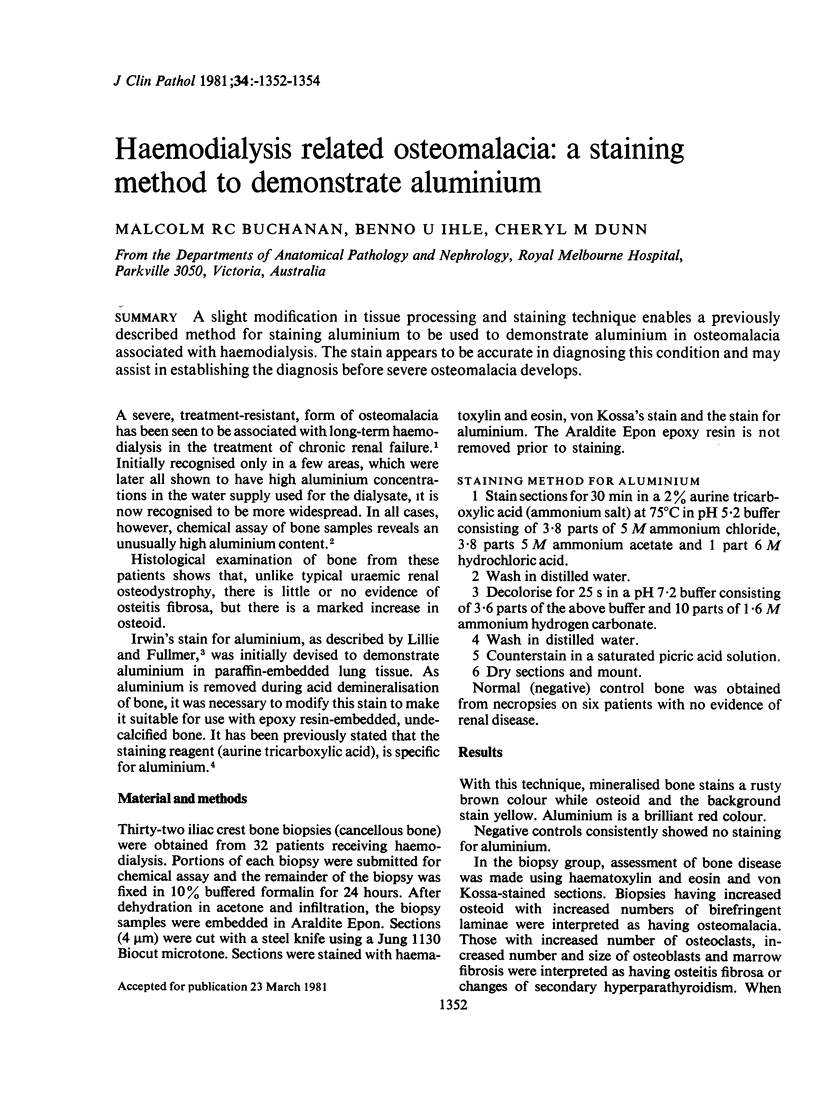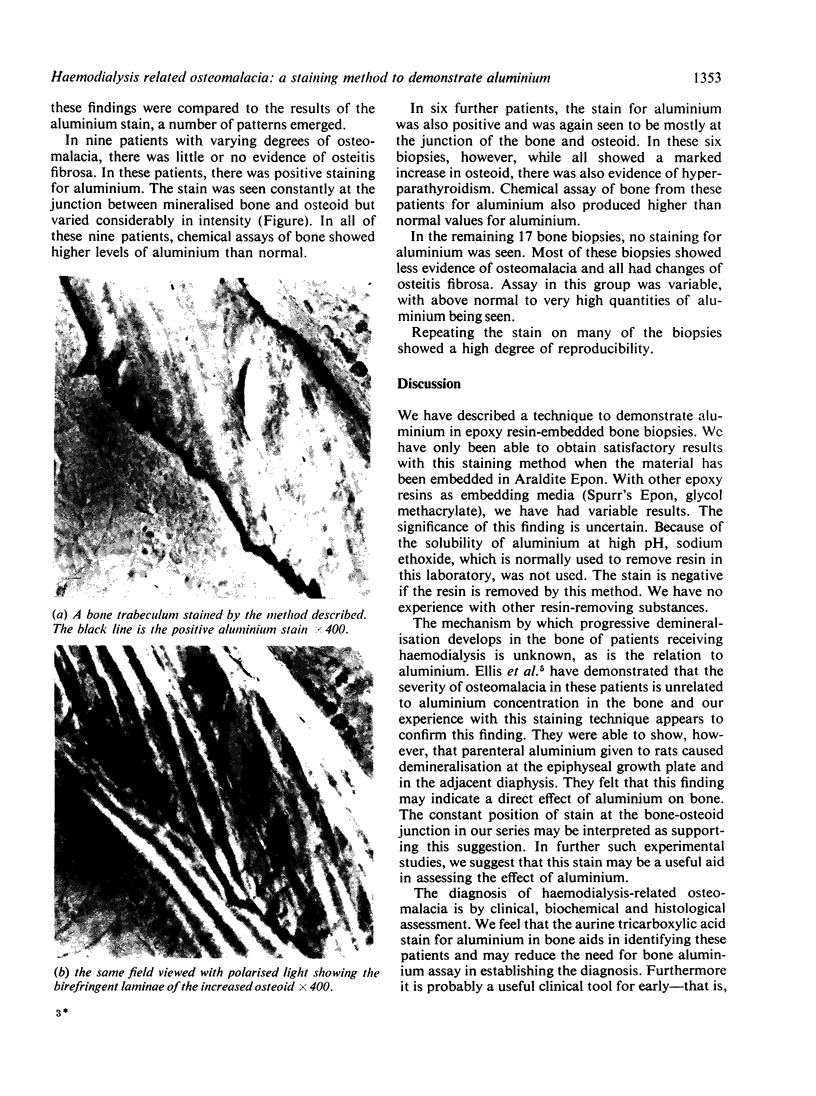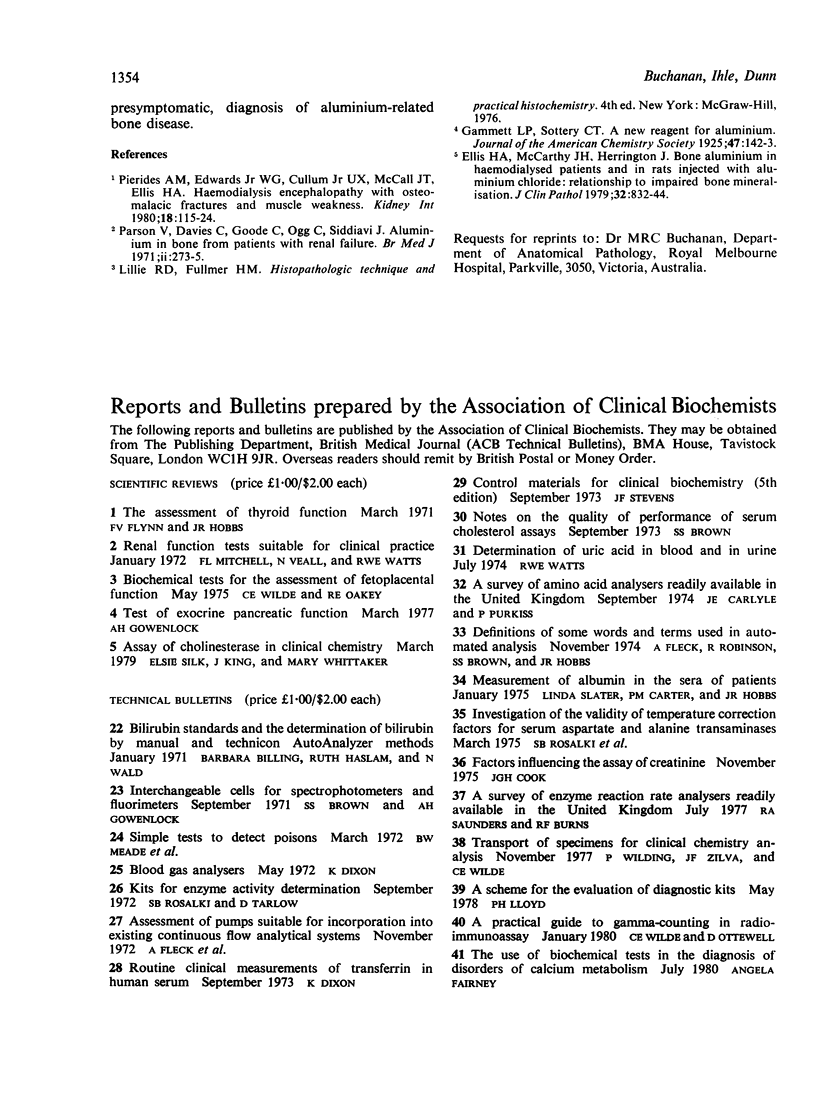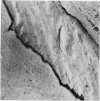Abstract
A slight modification in tissue processing and staining technique enables a previously described method for staining aluminium to be used to demonstrate aluminium in osteomalacia associated with haemodialysis. The stain appears to be accurate in diagnosing this condition and may assist in establishing the diagnosis before severe osteomalacia develops.
Full text
PDF


Images in this article
Selected References
These references are in PubMed. This may not be the complete list of references from this article.
- Ellis H. A., McCarthy J. H., Herrington J. Bone aluminium in haemodialysed patients and in rats injected with aluminium chloride: relationship to impaired bone mineralisation. J Clin Pathol. 1979 Aug;32(8):832–844. doi: 10.1136/jcp.32.8.832. [DOI] [PMC free article] [PubMed] [Google Scholar]
- Parsons V., Davies C., Goode C., Ogg C., Siddiqui J. Aluminium in bone from patients with renal failure. Br Med J. 1971 Oct 30;4(5782):273–275. doi: 10.1136/bmj.4.5782.273. [DOI] [PMC free article] [PubMed] [Google Scholar]
- de Wardener H. E., MacGregor G. A. Dahl's hypothesis that a saluretic substance may be responsible for a sustained rise in arterial pressure: its possible role in essential hypertension. Kidney Int. 1980 Jul;18(1):1–9. doi: 10.1038/ki.1980.104. [DOI] [PubMed] [Google Scholar]




